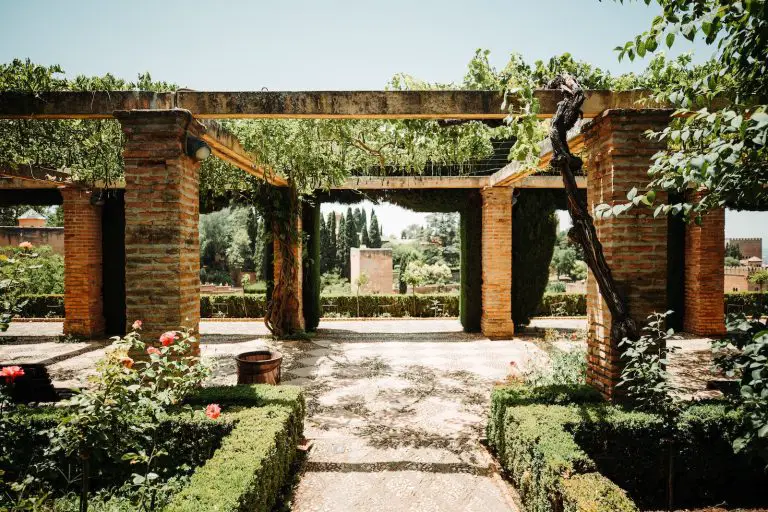The concept of courtyard gardens date back thousands of years, originating from the ancient civilizations of Mesopotamia, Egypt, and Persia. These enclosed outdoor spaces were designed to provide a private and protected area for relaxation, contemplation, and connection with nature. Over time, courtyard gardens have evolved and adapted to the various cultures and climates around the world, but their core purpose has remained the same – to offer a serene and tranquil retreat from the bustling world outside.

History of Courtyard Gardens
The history of courtyard gardens can be traced back to the ancient civilizations that existed around 4000 BCE. In Mesopotamia, the birthplace of the world’s oldest known gardens, courtyard gardens were used as a way to escape the arid desert and create a lush gradens, green oasis. These gardens were designed with a central pool to provide a cooling effect and were surrounded by fruit trees and flowers.
In ancient Egypt, courtyard gardens were an essential part of daily life for both the wealthy and the common people. The gardens were designed with a central pool or fountain, surrounded by shade trees, flowers, and plants that provided food and medicine. These gardens were often adorned with statues and decorative elements, such as painted walls and ornamental pools.
In Persia, the courtyard garden played a significant role in the design of homes and palaces. The Persian gardens were designed to represent the Garden of Eden, a paradise on earth. They were characterized by their symmetrical layout, with a central pool or fountain as the focal point. The gardens often featured a variety of fruit trees, flowers, and plants, as well as elaborate irrigation systems to ensure their survival in the arid climate.
In medieval Europe, courtyard gardens were primarily found in monasteries and castles. These French courtyard gardens were used for growing food and medicinal herbs, as well as providing a peaceful retreat for prayer and contemplation. The gardens often included a central fountain or well, surrounded by raised beds and trellises with climbing plants.
In more recent history, the courtyard garden has become a popular feature in both urban and suburban settings. They can be found in a variety of styles, from traditional European designs to modern, minimalist spaces.

Benefits of Courtyard Gardens
1. Privacy: One of the main advantages of a small courtyard garden is the privacy it offers. The enclosed nature of the space provides a secluded area where people can relax, reflect, and enjoy the natural surroundings without the intrusion of the outside world.
2. Microclimate: Courtyard gardens can create a unique microclimate within their walls, providing a more comfortable and cooler environment than the surrounding landscape. This is particularly beneficial in hot, arid climates, where the shade and greenery of the garden courtyard can offer a refreshing retreat.
3. Noise reduction: The walls of a courtyard garden can help to reduce noise pollution from the surrounding area, creating a peaceful and quiet sanctuary.
4. Low maintenance: Courtyard gardens typically require less maintenance than larger gardens, as they are often smaller and more contained. This makes them an ideal choice for busy homeowners or those with limited gardening experience.
5. Increased property value: A well-designed and maintained courtyard garden can increase the value of a property, as it adds an attractive and functional outdoor space.
Courtyard Garden Ideas
1. Incorporate water features: Water features, such as fountains and ponds with pea gravel, can add a sense of tranquility and beauty to a French garden. They can also help to create a cooling effect, making the space more comfortable in hot weather.
2. Use vertical space: In a small courtyard, it is essential to make the most of the available space. Incorporate climbing plants, such as vines and creepers, on trellises and walls to add height and interest to the garden.
3. Create a focal point: A focal point, such as a sculpture, water feature, or seating area, can help to draw the eye and create a sense of balance within the French gardens.
4. Choose appropriate plants: Select plants that are suited to the specific conditions of your courtyard garden or French style garden. Consider factors such as the amount of sunlight, the local climate, and the soil type.
5. Add seating: A French garden design or courtyard garden space should be a space to relax and enjoy the outdoors, so be sure to include comfortable outdoor furniture, seating areas. This could be a bench, a daybed, or even a hammock.
6. Consider lighting: Thoughtful lighting like fire pit can transform garden spaces into a magical space at night. Use a combination of ambient, task, and accent lighting to create the desired atmosphere.
7. Create a sense of enclosure: To enhance the feeling of privacy and seclusion, use plants, screens, or walls to create a sense of enclosure within the courtyard garden.
In conclusion, courtyard gardens offer a unique and private outdoor living space, that is both functional and beautiful. By understanding the history and benefits of these gardens, and incorporating various design ideas, one can create a stunning and tranquil retreat that can be enjoyed for years to come.


